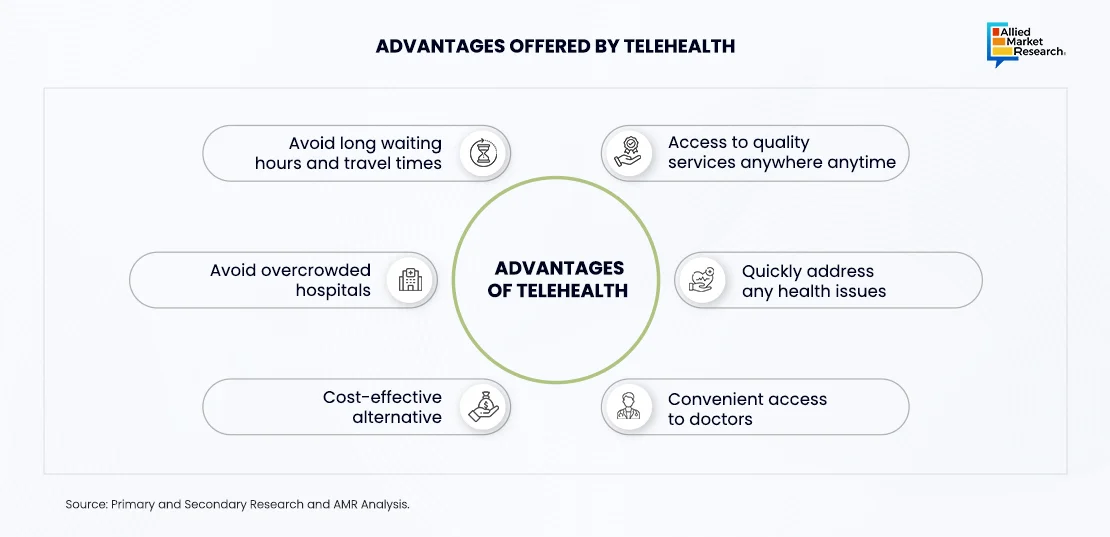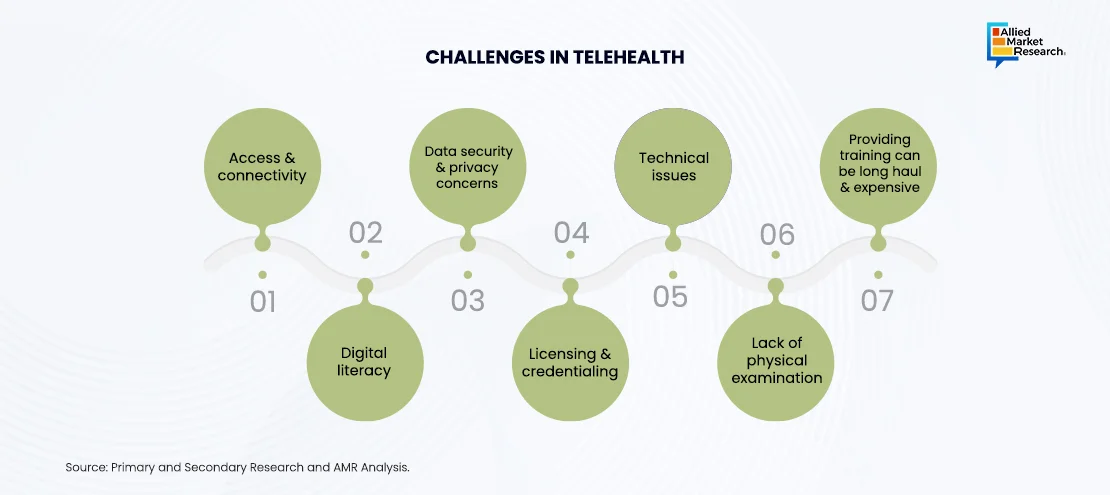Telehealth Beyond Convenience: Revolutionizing Healthcare Access through Technology

Telehealth represents a paradigm shift in healthcare delivery that leverages digital communication technologies to surpass traditional healthcare boundaries. By utilizing computers, mobile devices, and other digital platforms, it facilitates a diverse array of remote healthcare services. This includes virtual consultations, where patients are able to engage with healthcare providers from any location, as well as remote monitoring of vital health data, enabling proactive management of chronic conditions. Moreover, the transmission of medical images and records for diagnosis and treatment planning enhances diagnostic accuracy and treatment efficacy. Eliminating the need for in-person visits to medical facilities, these services facilitate patients with unparalleled convenience and accessibility, particularly beneficial for individuals residing in rural or underserved areas. Furthermore, telehealth enables the provision of continuous and personalized medical support, empowering patients to avail timely diagnosis and treatment. As telehealth continues to evolve, it holds the potential to revolutionize healthcare delivery, ensuring equitable access to high-quality care while embracing the digital transformation of the healthcare landscape.
Current Landscape and Strategies
The transition of telehealth from an emerging technology to an established and rapidly evolving field has been accelerated by the COVID-19 pandemic. According to the article published in the National Library of Medicine in 2022, the adoption rate of telehealth surged dramatically, with utilization rates increasing by 38 times compared to previous years. Healthcare systems worldwide have swiftly integrated telehealth services into their offerings, strengthened by established regulatory frameworks and reimbursement policies that support its implementation & sustainability.
Furthermore, the efficacy and satisfaction of patients with respect to these remote healthcare solutions continue to emerge. An article published in the National Library of Medicine in 2022, stated that according to its analysis of synchronous video vs in-person encounters in an outpatient ambulatory care clinic setting, 95% of patients were very satisfied with the quality of the health care they received and rated telehealth as better than or just as good as a traditional healthcare center visit. Patients appreciated the reduced waiting times and the ability to schedule same- or next-day appointments with their primary care physicians.
Key industry leaders, including Koninklijke Philips N.V., GE Healthcare, Cerner Corporation, Siemens Healthineers, and Teladoc Health Inc., have brought technological advancements in these remote healthcare solutions and services through significant investments in R&D and product launches. For instance, in Jan 2023, Teladoc Health, Inc., the global leader in whole-person virtual care, announced the launch of Chronic Care Complete, a first-of-its-kind chronic condition management solution to help individuals improve their health outcomes while living with multiple chronic conditions. The solution provides members with a unified, comprehensive experience that leverages connected health monitoring devices, access to health coaches, and support from physicians & mental health specialists when needed.
Similarly, in September 2023, Apollo Telehealth introduced Tele-Emergency ICU services across nine NTPC (National Thermal Power Corporation) plants, enhancing critical care capabilities. This initiative aims to provide remote medical supervision and support for emergency situations, leveraging advanced telehealth technologies.
Advantages Offered by Telehealth
The advantages of telehealth potentially drive its acceptance in the healthcare industry and among the patients. Here are some advantages offered by telehealth:

Roadblocks and Challenges
Despite its rapid growth and adoption, telehealth faces technical limitations and challenges. These include issues related to interoperability and integration with existing healthcare systems that pose significant hurdles, as seamless connectivity and data exchange are crucial for effective telehealth implementation. Ensuring data privacy and security is a paramount concern, as the transmission and storage of sensitive health information require robust safety and privacy measures to protect patient confidentiality.
Inaccessibility to technology and internet connectivity further intensify the challenges in telehealth adoption, particularly among underserved populations. Addressing these challenges is essential to ensure smooth access to telehealth services and mitigate healthcare issues.
Moreover, concerns persist regarding the quality and accuracy of remote diagnostics, highlighting the need for standardized protocols and guidelines. Initiatives such as the American Medical Association (AMA) telehealth immersion program, which is the collection of AMA STEPS Forward Practice Innovation Strategies, offers proven approaches on how to implement digital health solutions and reduces technology-associated administrative burdens that plays a significant role in guiding the physicians and health systems in optimizing and sustaining telehealth services. By providing comprehensive guidance and resources, such initiatives aim to enhance the quality and effectiveness of telehealth delivery, driving its broader adoption and utilization.

Future Outlook of Market
The future scope and applications in telehealth hold immense possibilities for transforming healthcare delivery. Advancements in artificial intelligence (AI) and machine learning enable personalized treatment recommendations on the basis of individual patient data, improving clinical decision-making and outcomes. Virtual reality (VR) and augmented reality (AR) technologies enhance patient awareness and engagement, offering immersive experiences for rehabilitation and mental health interventions. Moreover, they aid in procedural training of upcoming physicians and mentoring in the complex medical procedures. In addition, wearable sensors and Internet of Things (IoT) devices enable continuous health monitoring, facilitating early detection of health issues and proactive intervention. These emerging technologies have the potential to revolutionize telehealth, enhancing access, efficiency, and quality of care for patients worldwide.
Adoption of Telehealth Globally
In addition, during the secondary analysis, North America generated higher revenue in 2022, owing to the strong presence of advanced healthcare infrastructure, substantial investments in R&D, and the presence of major key players offering advanced telehealth solutions & services. In addition, in 2022, Vicert, an information technology company, estimated that 83% of the U.S. population owns a smartphone and 77% of young adults use their phone to look for health conditions. Thus, the rise in adoption of advanced technologies is potentially contributing to the demand for telehealth.is potentially contributing to the demand for telehealth. Europe is expected to witness a significant increase in revenue in the coming years owing to well-established healthcare infrastructure along with surge in governmental support for innovation. Moreover, rise in financial investments by the government as well as private organizations for implementation of telehealth technology propels the demand for telehealth solutions. In addition, the integration of innovative technologies such as IoT (internet of things) & data analytics for remote patient monitoring, rise in awareness of 4G & 5G spectrum, and adoption of AI for carrying out complex treatment solutions are anticipated to boost the demand for innovative telehealth solutions.
Furthermore, Asia-Pacific is expected to witness the fastest revenue growth during the forecast period owing to a rise in government initiatives for spreading awareness about e-Health and telemedicine. For instance, in April 2020, Ministry of Health & Family Welfare of India undertook various initiatives using Information & Communication Technologies (ICT) for improving efficiency & effectiveness of the public healthcare system. Furthermore, surge in demand for healthcare, increase in disease burden, and technological advancements foster the adoption of telehealth in the region.
A Convenient Transformation in The Healthcare Industry
Therefore, telehealth has brought a transformation in the delivery of healthcare services, offering unparalleled convenience, accessibility, and efficiency in diagnosis and treatment. While noteworthy progress has been made in advancing telehealth technologies and addressing associated challenges, ongoing efforts are required to ensure widespread adoption, improve interoperability, enhance data security, and address disparities in access. By leveraging the collective expertise of industry leaders, policymakers, healthcare providers, and technology innovators, telehealth has the potential to revolutionize healthcare delivery and improve patient outcomes on a global scale.
For further insights, get in touch with AMR analysts



